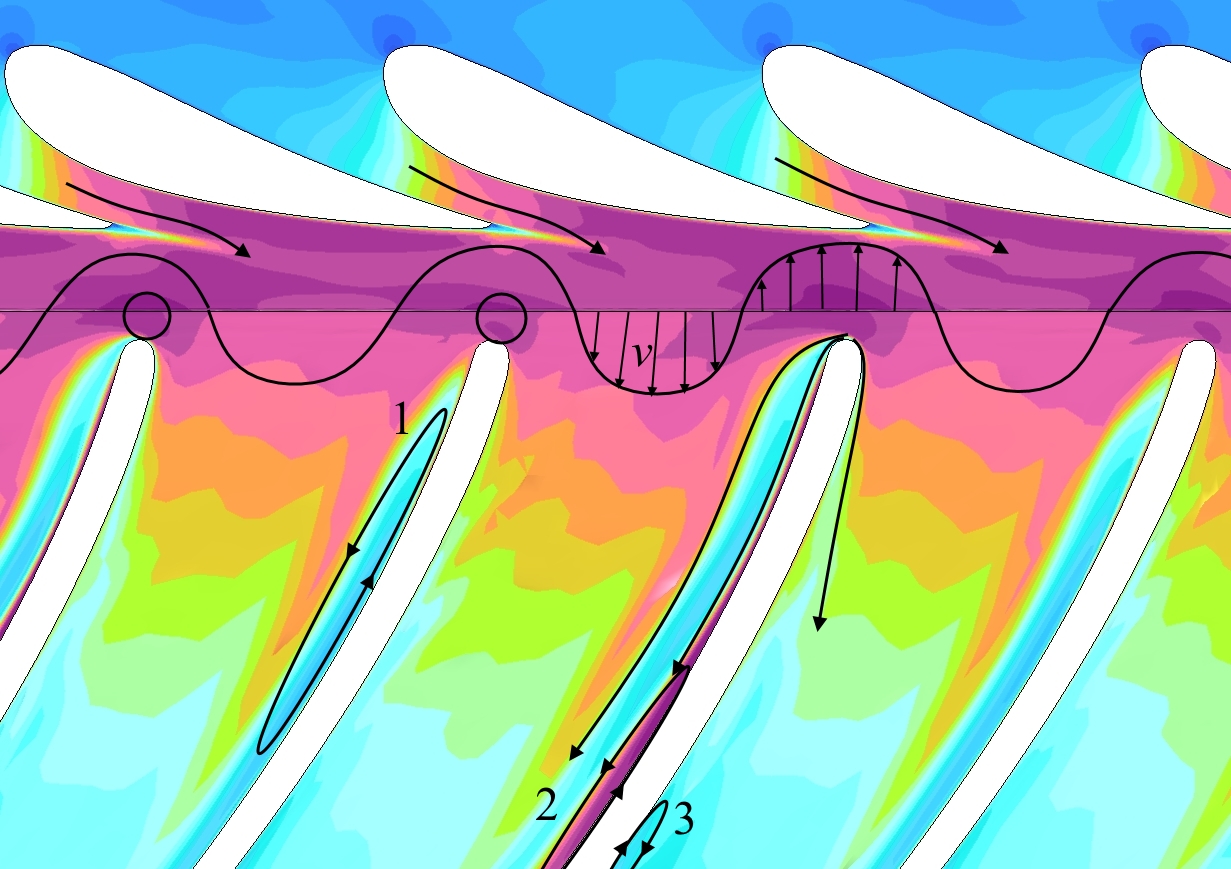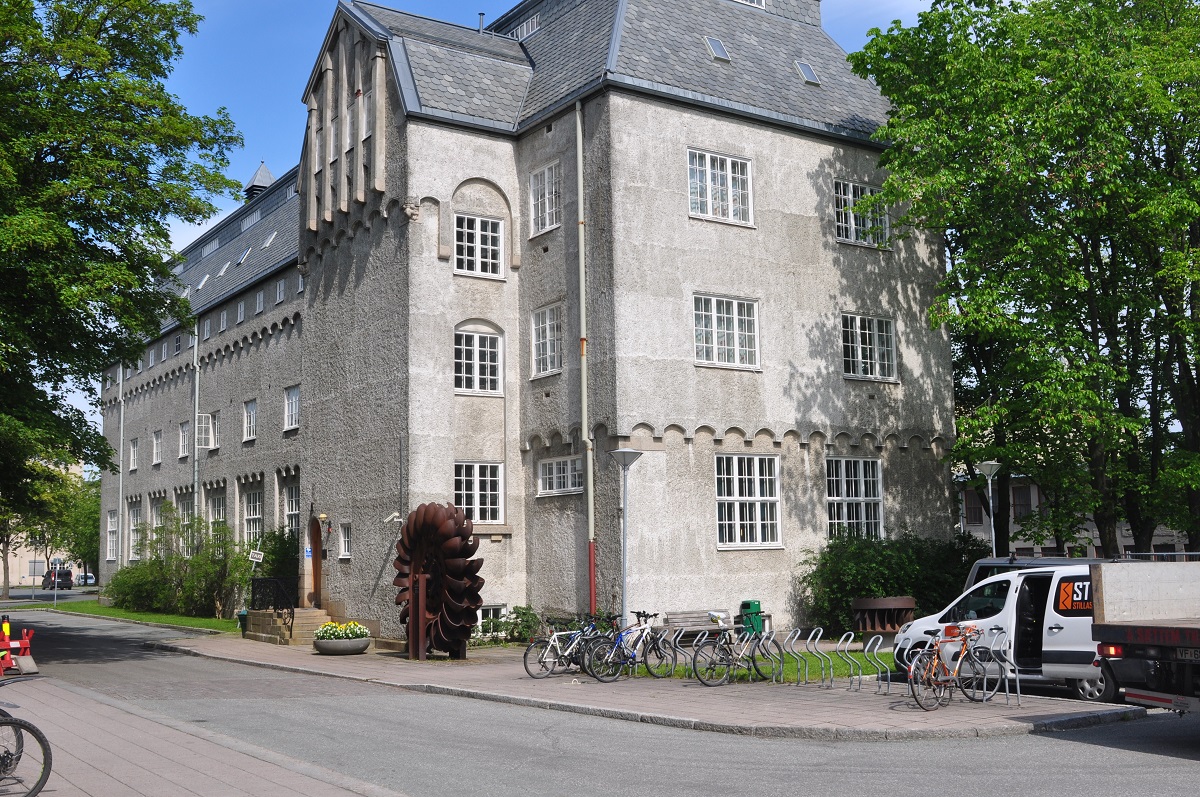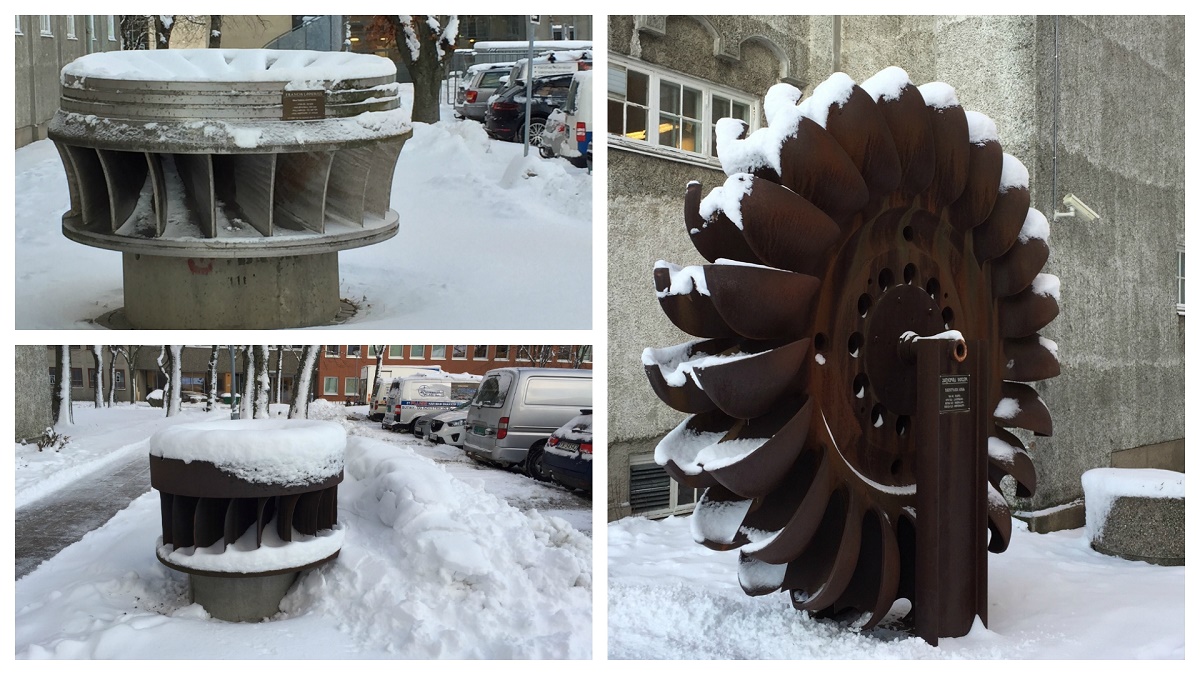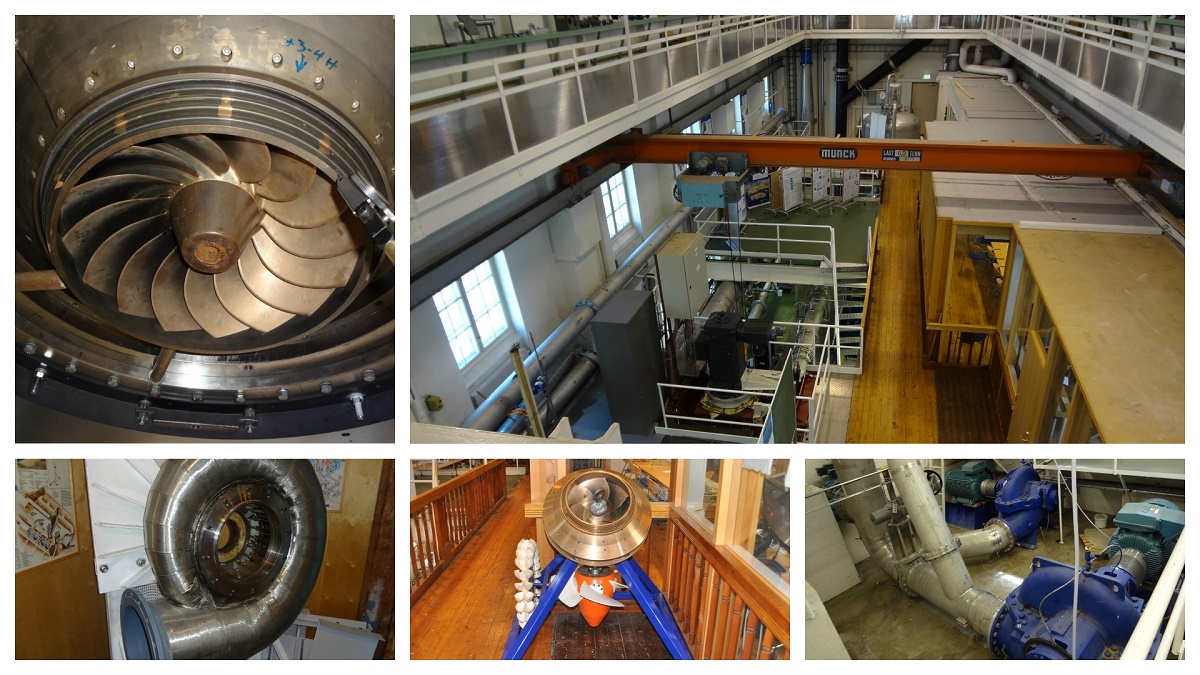About - Waterpower Laboratory - Hydro Power Laboratory - Department of Energy and Process Engineering (EPT)
Waterpower Laboratory
More about the Waterpower Laboratory
The Waterpower Laboratory at NTNU combines 100 years of experience with state-of-the-art facilities that are unique in Europe. It has played a leading role in the development of global hydropower, including efficient design of hydro turbines.
One of the university’s oldest laboratories, it was built in 1917 on NTNU’s Gløshaugen campus in Trondheim, Norway, for research and development of mechanical equipment in the hydropower industry.
Facilities and test rigs
Its modern facilities include test rigs for Francis, Pelton and pump turbines. The laboratory offers a high pressure pumping system, a long conduit to investigate discharge measurement techniques and several other test facilities for basic research in fluid mechanics.
The Francis, Pelton and pump turbine test rigs enable model tests according to the standards of the International Electrotechnical Commission (IEC). A unique flexibility of the Francis turbine test rig is that it can produce flow characteristics identical to a prototype for the transient measurements, such as load variation (both variable speed and discharge), start-stop, total load rejection, emergency shutdown and speed-no-load.
The pumping system can discharge up to one cubic metre per second in parallel connection. Running the pumps in series enables pressure of up to 100 metre water column. The laboratory has its own workshop where models intended for education as well as research can be built. The two storage overhead tanks with the interconnecting flow rate measurement make the Waterpower Laboratory unique in both a national and a European context. The free fall is up to 16 metres and the reservoir enables flow-dynamics studies and research. The tailrace and sump are under the floor of the laboratory. The walls and the bottom are reinforced concrete, and the capacity of the sump and tailrace is 450 cubic metres. This is the main storage facility for water in the laboratory.
Unique research and education
The laboratory offers research for master’s degree, PhD, postdoctoral and international researchers. Experimental, numerical (CFD and FSI) and analytical studies are conducted. The laboratory also provides a unique opportunity for PhD and postdoctoral researchers to design and develop a turbine their own way using in-house codes. The laboratory is responsible for providing knowledge for education related to hydropower and turbomachinery. Professors at the Waterpower Laboratory teach courses for undergraduate, graduate and PhD students. The laboratory is actively involved in international collaboration with several universities and industries globally.
Some highlighted projects
High head Francis turbine – HiFrancis (2015-2019)
High head Francis turbine – HiFrancis (2015-2019)
Competitive electricity prices and reduced profit margins have forced operation of hydraulic turbines under critical conditions. The demand for extended operating ranges and for high efficiency of the turbine runners has forced manufacturers to produce lightweight runners. A turbine runner sometimes experiences resonance when a forced (flow-induced) excitation frequency approaches the runner’s natural frequency, resulting in failure. The cost of structural failure after commissioning is prohibitive.

To attain a reliable and safe runner design, it is vital to understand the structural response to flow-induced excitations. High amplitude pressure pulsations cause fatigue loading of the blades, which develop cracks over time. The amplitudes depend on the flow conditions, type of turbine and stator/rotor vane combinations. The structural response depends on the material properties, flow-induced damping and natural frequencies. In addition, in a hydraulic turbine, changes in flow velocity from less than 1 m/s to over 40 m/s create challenges in predicting the response. Hydrodynamic damping can play a crucial role in reducing vibration amplitudes under resonance conditions.
The research and development project is supported by the Norwegian Research Council and the Norwegian hydropower industry. Under this project, experimental and numerical investigations on a high head Francis turbine and a hydrofoil will be conducted. The project focuses on how to cope with the current challenges facing turbines globally.
- How can we avoid resonance in the turbine runner?
- How do the pressure waves originating from the rotor-stator interaction propagate in the turbine?
- How can we obtain reliable information about the dynamic loading and hence fatigue of the runner blades?
- What is the best practice guideline to produce credible numerical results?
- How can we reduce the time and costs of numerical simulations?
Active participation
- Ole Gunnar Dahlhaug, Leader
- Pål-Tore S. Storli, Assistant Professor
- Bjørn W. Solemslie, Postdoctoral researcher
- Chirag Trivedi, Postdoctoral researcher
- Carl W. Bergan, Research scholar
- Einar Agnalt, Research scholar
- Erik Tengs, Research scholar (Industrial)
HiFrancis also includes active participation from consultants, manufacturers and utility companies.
Development of flexible turbines – FME (2017-2025)
Development of flexible turbines – FME (2017-2025)
Electricity is produced using both continual and intermittent types of energy sources. Competitive electricity prices and the trend towards wind and solar energy have forced industries to utilize intermittent energy sources. This has resulted in power imbalance and frequent grid disruptions. For the stable and uninterrupted operation of a power grid, the demand factor (i.e. electricity demand/generation) must be maintained within the allowable limit.
Hydropower is considered a vital alternative to accommodate real-time demand. Today, hydraulic turbines have the capability to change power output by 1-25 MW per second, depending on the turbine type and the power generation capacity. To cope with the variable electricity demand from end users and variable power generation from wind and solar energy, research on variable-speed technology of hydraulic turbines is vital. Currently, it is a good alternative as it allows stable performance at off-design conditions and a wide range of combinations. When both the runner angular speed and the discharge vary, a complex pressure and velocity field develops in the turbine. Flow angle, tangential velocity and the swirl component of velocity vary in time. Therefore, it is important to study how a pressure field changes for variable-speed configuration and how pressure amplitudes vary.
The project is a part of the Norwegian Research Centre for Hydropower Technology. More information can be found here.
Contact - Waterpower lab
Address:
NTNU Vannkraftlaboratoriet
NO-7491 Trondheim
Visiting address:
Alfred Getz vei 4 (view in Mazemap)
Leader:



